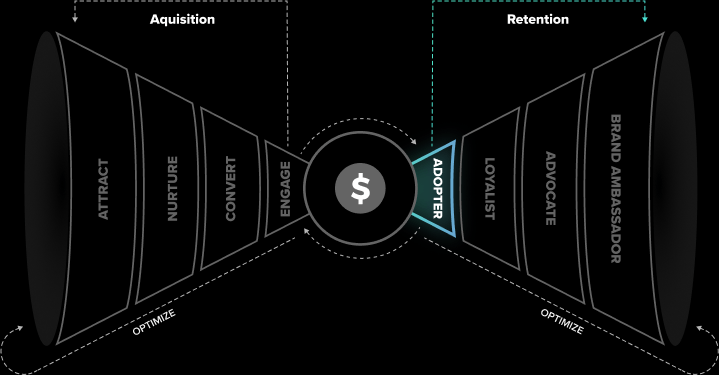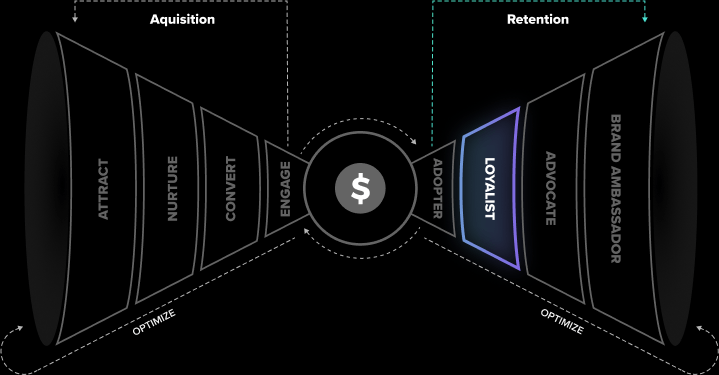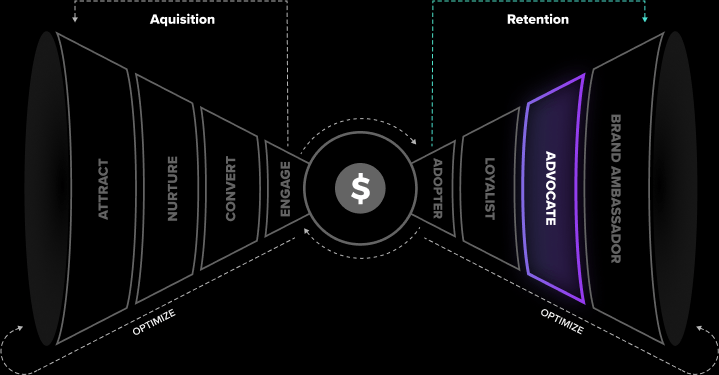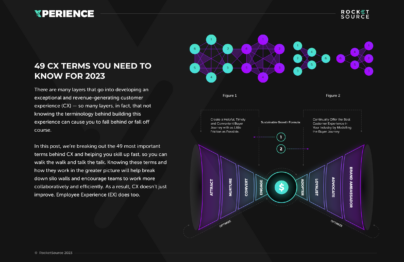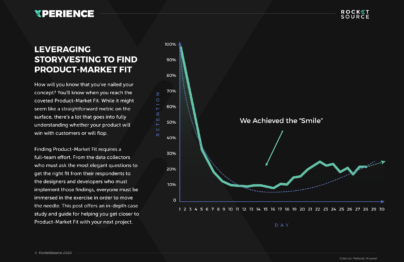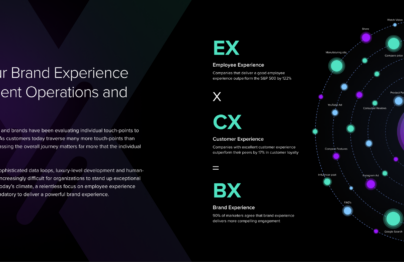The Bow Tie Funnel is a reimagination of the traditional marketing funnel. This modern marketing funnel includes the pre-purchase stages that a customer goes through when deciding to buy from a company and the post-sale stages of the customer journey.
The traditional funnel represents an antiquated marketing mindset of volume and attrition. Today’s modern marketers now understand that approaching business from a customer’s point of view delivers more valuable experiences for both customers and employees.
The Beauty of the Bow Tie Funnel
isn’t the pre-purchase and the post-purchase journeys, though. The feedback loop sits smack-dab in the center, demonstrating the importance of retention and getting customers to return to buy continually.
Bow Tie Funnel: A Focus on Growth and Retention
The modern marketing funnel isn’t comprised of four basic steps, nor does it stop when the first purchase is made. There are many complexities in the end-to-end customer experience, from prospect to buyer and beyond.
The bow tie funnel honors those complexities by getting down to the nuances of behavioral economics and creating strategic growth on the front end and sustainable loyalty on the back end. These two elements combined build out powerful, effective brand experiences and empower organizations to stay more relevant.
The focus on retention makes this funnel far more powerful than other traditional mechanical approaches to the customer experience. Baked in this funnel are behavioral trends and loyalty drivers that showcase the most important growth levers to pull through incremental changes to operational efficiencies.
It’s the End-to-End Customer Journey that Drives Growth
The path-to-loyalty is just as important, if not more important, than the path-to-purchase. Getting customers in the door is easy enough, but getting them to stay, tell their friends, and advocate for a brand is a different ball game.
In taking a proactive role to gather feedback and track the buyer’s experience from soup to nuts, organizations can slow churn and increase lifetime value (LTV) by identifying where there’s friction in the offerings and where there are holes in the products or services being rendered.
As a result, organizations are primed to exceed customer expectations and surge past the competition.
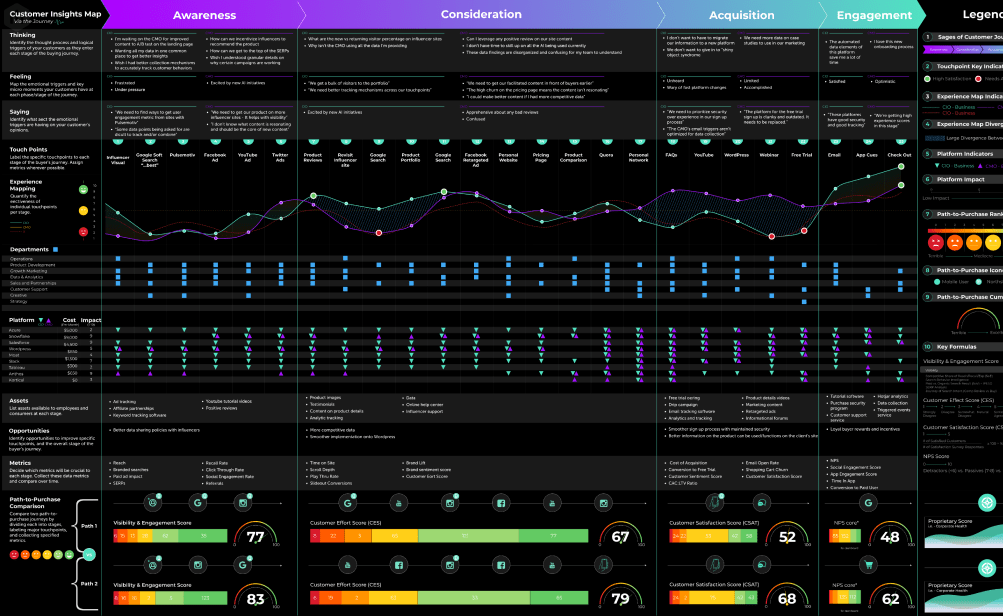
Frameworks to Guide Success Across Each Stage of the Bow Tie Funnel
StoryVesting Framework
The proprietary StoryVesting framework gets to the heart of what’s needed to develop exceptional brand experiences. By aligning customer and employee experiences, organizations can better match their why with the customer’s expectations and needs, increasing retention and improving the cognitive associations of the brand.

Empathy Mapping
Operating from an empathetic standpoint requires an insights-centric, irrefutable glimpse into the employee and customer’s thoughts, feelings, actions and words. Through empathy, organizations can take a more human-centered approach to developing product offerings and bringing them to market.
Transformative Alignment of the 3Ps
Analyzing the gaps in an organization’s people, processes and platforms allows teams to understand what’s missing and needed to drive transformation through closer alignment. When these three core elements come together effectively, the customer and employee experiences improve.
Advanced Data/Analytics Loops
By harnessing the data and analytics loops available today, companies can get a more sophisticated look at what’s happening in the organization and identify transformative opportunities. Through data and analytics, companies can better understand what the customer wants and needs and find innovative ways to meet those demands head-on.
Customer Experience (CX) Terms
- 360° Degree View of the Customer
- AI Ops
- Barlow Bands
- Behavioral Triggers
- Bow Tie Funnel
- Brick-to-Click
- Business Impact Analysis (BIA)
- Cognitive Computing
- Cohort Analytics
- Content Mapping
- Conversational User Guidance
- Customer Data Profile
- Customer Experience (CX)
- Customer Friction
- Customer Insights Map
- Customer Journey
- Customer Journey Mapping
- Customer Satisfaction (CSAT)
- Customized Ratios
- CX Intelligence
- CX Led Growth
- CX Metrics
- Data as a Product (DaaP)
- Data as a Service (DaaS)
- Data Culture
- Data Driven
- Data Engineering
- Data Fabric
- Data Governance
- Data Humanization
- Data Hygiene
- Data Looping
- Data Mapping
- Data Mining
- Data Modeling
- Data Monetization
- Data Swamp
- Data Visualization
- Data Warehouse
- Data-Centric
- Descriptive Analytics
- Diagnostic Analytics
- Digital Asset Management (DAM)
- Digital Transformation
- Dirty Data In Dirty Data Out
- Embedded Intelligence
- Empathy Mapping
- Employee Data Profile
- Employee Experience (EX)
- EX to CX Data Mapping
- EX to CX Mapping
- Experience Management (XM)
- Gap Analysis
- Generative AI
- Human-Centered Design (HCD)
- Journey Analytics
- Machine Learning (ML)
- Managed Agile Services on Demand
- Modified Hoshin
- North Star Metric
- Party Data
- Pathway to Purchase
- Predictive Analytics
- Product-Market Fit Mapping
- Real Time Design Looping
- Revenue Acceleration
- RevOps
- S Curve of Growth
- Stack Impact Analysis
- StoryVesting
- Table Stakes Testing
- The 3 P’s
- User Experience (UX)
- User Insights Map
- User Interface (UI)
- Voice of the Customer (VoC)
- Voice of the Employee (VoE)
- World Cloud Generator Sentiment Mining
- X Analytics

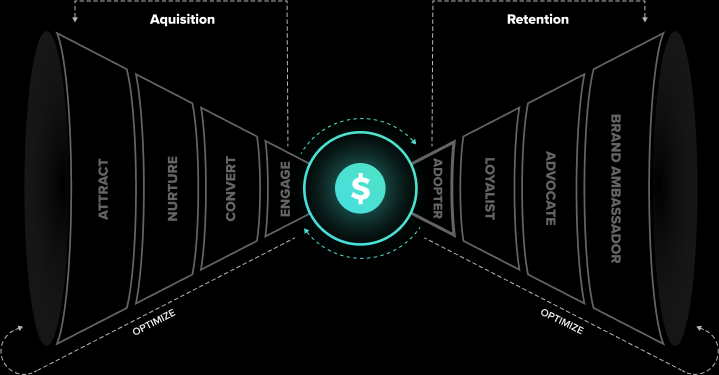
 Churn Rate
Churn Rate